The Irish Pub’s Roots Go Back 120 Years
Its history saw it go from Pabst Tied House to "soft drink parlor" to gay bar to Irish bar.
A large medallion on the second floor of this 1904 building gives even a casual observer a hint as to its history. The familiar hops-encircled “B” was then and is still now a symbol of the Pabst Brewing Company, a local firm that built hundreds of taverns like this throughout the country in the pre-Prohibition era.
In this instance, the $10,000 “Saloon Boarding House” was designed for the brewery by Charles F. Peters, architect.
This “Tied House” (a tavern that was tied to a particular brewery) replaced an earlier saloon shown in an 1894 map on the northeast corner of what is now N. Water and E. Erie streets in one of the oldest parts of town, and at the foot of the Water Street Bridge. Today this is the site of The Irish Pub. It’s entirely possible you could have bought a drink at this spot even a century and a half ago.
To the east, for many years, was the Merchant’s Hotel. The current tavern also was a rooming house with nine units above. This was not one of the more select districts of the city, located as it was on the foul river in an industrial and transient section of town. But the Pabst Brewing Company knew a thing or two about making a profit off of the working class.
Think back to this corner in 1894, when Pabst had just won its celebrated blue ribbon at the Columbian World Exhibition in Chicago. Within one block were such firms as American Biscuit Co. (later Nabisco), the Eagle Lye Works, Milwaukee Parlor Frame, the Merchants Hotel, an awning factory, the Milwaukee Gas Stove factory, the Milwaukee Brass Works, Toeffler Iron Works, a stable for the sale of horses and The Telegram Cycle Man’f’g Co., located right across the street, making bicycles.
That’s one large and thirsty clientele, even without the transients in the hotel next door, the loafers in the rooming house above, or the folks crossing the river, perhaps on the streetcars that passed along the building’s Erie street and Water street fronts.
By 1920, with the onset of Prohibition, Jacob “Jack” Mushea leased the place from Pabst, and was forced to make some changes to the place. The saloon, at was then 200 E. Water St., was rebranded as a “Soft Drink Parlor.”
In June 1928, a federal inspector took a look around at the Soft Drink Parlor, which the paper called the “Merchant’s Hotel Bar.”
The agent “stuck an ice pick in an odd device corresponding to an automobile tire valve,” the reporter wrote.
“He expected secret doors or panels to open, but wasn’t prepared for a squirt of moonshine which caught him right in the eye. Working from the valve upward, the agent found a partially filled 15-gallon tank on the second floor.”
All was forgiven in August, 1934 with the repeal of Prohibition. Mushea took out a permit to occupy the building as a tavern.
When asked the former occupancy of the building, Mushea did not answer “Soft Drink Parlor.” Instead, he said it had been a tavern all along.
Also, his landlord all along had been an affiliate of the Pabst Brewing Company, and he still sent his rent checks to the old brewery complex on W. Juneau Ave. In 1933, in anticipation of the end of Prohibition, and the resumption of brewing, Premier Pabst Corp., the owner, replaced the east wall of the saloon with 12 inch brick and a new footing of 12 inch reinforced concrete.
This tavern was ready for business once again. By 1938 Jack Mushea sold it to Steve Chlebana, who also ran it as a tavern, restaurant and rooming house.
The tavern came into the hands of Evelyn Hren by 1955, and she operated it as the Pittsburgh Tavern, open at 6 a.m. In that year she married Sebastian Restivo, a circulation manager for the Milwaukee Journal. Apparently the tavern was for extra income. The tavern had a 6-foot by 8-foot Pabst sign on the south wall, and another sign advertising the Milwaukee Clipper steamship service. In 1965, Restivo relocated the Pabst sign to the north side of the tavern, where it would not be seen today, due to the construction of the Historic Third Ward parking garage to the north. But back then, the sign beckoned travelers heading south on N. Water St., hopefully during the evening rush hours. It sure caught the attention of the inspector, who issued a citation for hanging the sign to the building with roofing nails, a violation.
By 1967 the building was owned by an affiliate of Harri Hoffmann, whose family still owns the Hoffco shoe polish factory across the street. The city had Harri fix “extensive cracks and openings on the masonry wall on the south side of the building.” Meanwhile, the rooming house upstairs wasn’t getting any fancier, and the city fathers were about to declare the entire Third Ward an adult entertainment/red light district. The Historic Third Ward as we know it today found its origins in those who opposed the adult district plan.
In 1969 somebody with the lovely name of Ralph Von De Grave opened the restaurant here as “Capain’s Table” and the saloon as “Captain’s Chair Tap.” Meanwhile, the signs outside shifted from Hamm’s to Pabst, to Blatz to Andeker, to Old Style. Bryan Galligan applied to occupy it as “The Captain’s” in 1973.
Finally, the tavern was bought by Robert O. Schmidt in 1976 and a new era had dawned. Schmidt put in dozens of improvements to the place over the 30 years he was to own it. One of the first moves was to clear out the rooming house, which was replaced by a banquet – meeting hall. The M & M Club, as he called it, was to become a popular gay bar that would serve the neighborhood for three decades.
It was the first gay bar to open up its windows to the street, instead of hiding the interior behind plywood. Schmidt also sponsored gay support organizations, and made the tavern the site of free sexually transmitted disease testing at a time when AIDS was spreading through the community. Schmidt put in a full service restaurant, called the Glass Menagerie, and made the most of the location. On a busy night, the crowd would be 50 percent women and 50 percent men. The women were lesbians and the men were gay. It was also a popular after-work spot for the downtown crowd, and also had a piano in the bar for fun.
Schmidt sold the place to the current operators in 2006, and the building made a rapid transformation to its current state as an Irish bar. Really, quite little has changed, since Schmidt put in a lot of time and money into the old place, which is one of the few Third Ward locations to have a parking lot. A sunroom and patio enclosure add to the attractions of the place.
Today the handsome corner building looks much as it did when new. The Pabst cartouche still dominates the outside, which has been restored to its original Cream City brick. A plaque near the door, which faces E. Erie St., attests to the building’s inclusion in the National Register of Historic Places.
Inside the tavern is much as it was before. It has high ceilings of shiplap wood construction, and 18 fixed, backed, wooden stools along its question mark shaped bar. The back bar features brown liquors, which is a nice Irish touch. There are wonderful views of the action on the Water Street Bascule bridge, and in season you can watch the dual leaves of the span go up and down to admit pleasure vessels. You used to see the Leona B pushing its coal barges upstream here, but that is no more. There is a bar dice cup, and often Rugby on the television. A number of Irish photos and flags sets the scene.
Outdoors, the bicycle rack is busy, loaded with bikes of customers and staff. A large pennant hung near the entrance is the green and gold flag of the Milwaukee Bicycle Polo Club. You won’t find another one of them, even in Riverwest. Beyond the main bar is the open glass walled addition that was the Glass Menagerie restaurant portion of the building. It has fewer tables than before, but is still a nice internal getaway. The outdoor garden includes a roofed portion that is now a smoking lounge and outdoor bar in season. It is somewhat heated, even in the winter.
This building has made the transition from tied house to gay bar to Irish bar as the neighborhood itself has transitioned from an industrial zone to a red light district to one of Milwaukee’s hottest neighborhoods, with land values of $30 per square foot. The old building that Bob Schmidt bought for a little over $10,000 and sold for just under $1 million is poised for its next century.
On Tap - Sponsored by Lakefront Brewery
- Blue Moon
- Great Lakes Christmas Ale
- Harp Lager
- Lakefront IPA
- Lakefront Riverwest Stein
- Magners Cider
- New Glarus Spotted Cow
- Smithwicks Ale
- Stella Artois
- Guinness Draught
Photo Gallery
The Verdict
- Trade Name: The Irish Pub
- Location: 124 N. Water St., Milwaukee
- Neighborhood: Historic Third Ward
- Subdivision: “Original Plat of the Town of Milwaukee East of the River”
- Phone Number: 414 225-9400
- Website: http://www.theirishpub.us/main/
- Facebook: https://www.facebook.com/TheIrishPubMilwaukee
- Twitter: None Found
- Description: Full Service Restaurant, Banquet Hall [25% of revenue food sales] and Tavern [75% of revenue alcohol sales]
- Featured Drink: A $2 PBR to go with your $1 burger. Tullamore D.E.W. for $4. Many specials frequently change.
- Capacity: 210
- Restrooms: Two men’s, two women’s.
- Year Established: 2006
- Year Building Constructed: 1904
- Estimated Annual Rent: 4,607 square feet at $22.85/s.f.=$105,265 per annum according to City Assessor’s calculations. Property is assessed at $260,700 for the 8,691 square foot lot [$30.00/s.f.] and $683,300 for the 4,607-square-foot building for a total assessed valuation of $944,000. Estimated taxes based on Combined Property Tax Rate 2014 at $29.97 per $1,000 valuation equals $28,291.68 plus BID#2 assessment and are presumed paid in full. Tavern operator owns property through holding company. Operator purchased building 06/02/2006 for $990,000.
- Property Owner: 124 N. Water LLC., John J. Duggan, Agent.
- Business Owner: Colgon LLC. Rebecca Goldberger [D.O.B. 11/05/1975] Registered Agent. John J. Duggan owns 33% of business. All other owners control less than 20% each.
- Walk Score: 92 out of 100 “Walker’s Paradise.”
- Transit Score: 68 out of 100, “Excellent Transit.” Was once on streetcar line and shall be again.
- Games of Chance: None Found
- Games of Skill: Bar Dice
- Trade Name : The Irish Pub
- Aldermanic District: 4; Bob Bauman
- Police District: 1
Hours of Operation
| Is Open? | Day | Open | Close | Expected Customers | Age Restriction |
|---|---|---|---|---|---|
| True | Sun | 9:00AM | 2:00AM | 120 | |
| True | Mon | 11:00AM | 2:00AM | 120 | |
| True | Tue | 11:00AM | 2:00AM | 120 | |
| True | Wed | 11:00AM | 2:00AM | 120 | |
| True | Thu | 11:00AM | 2:00AM | 120 | |
| True | Fri | 11:00AM | 2:30AM | 200 | |
| True | Sat | 11:00AM | 2:30AM | 200 |
Bar Exam
-
Lakefront Brewery’s New Riverwalk Patio
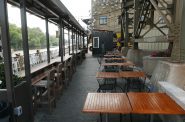 Jul 26th, 2023 by Michael Horne
Jul 26th, 2023 by Michael Horne
-
How Falcon Bowl Was Saved
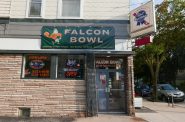 Jul 12th, 2023 by Michael Horne
Jul 12th, 2023 by Michael Horne
-
Clementines Evokes the New Bay View
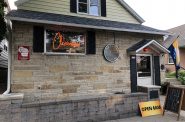 Sep 19th, 2022 by Michael Horne
Sep 19th, 2022 by Michael Horne


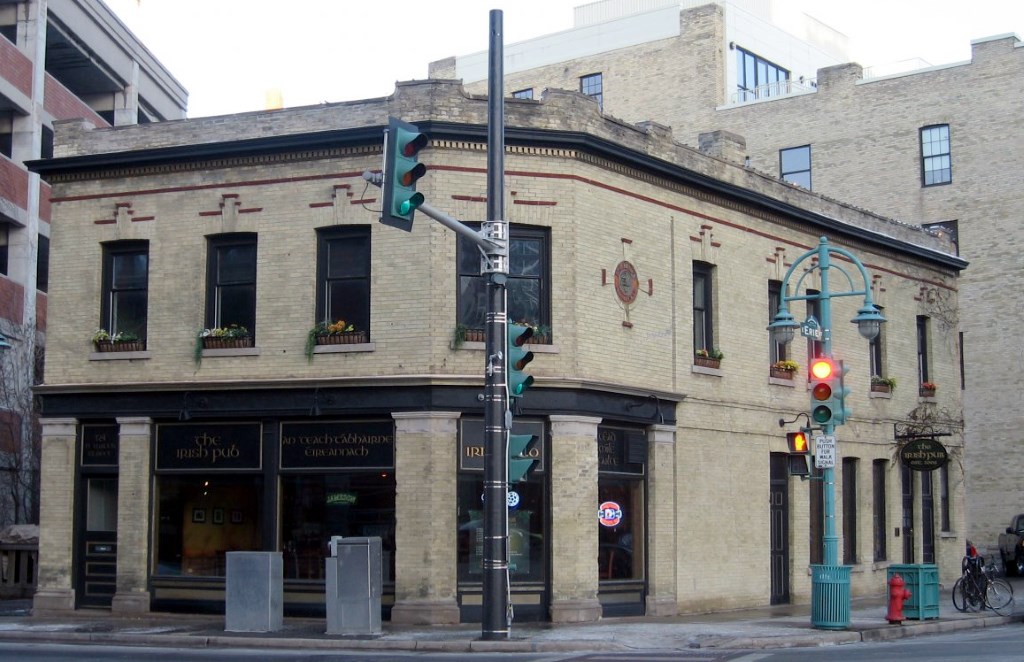
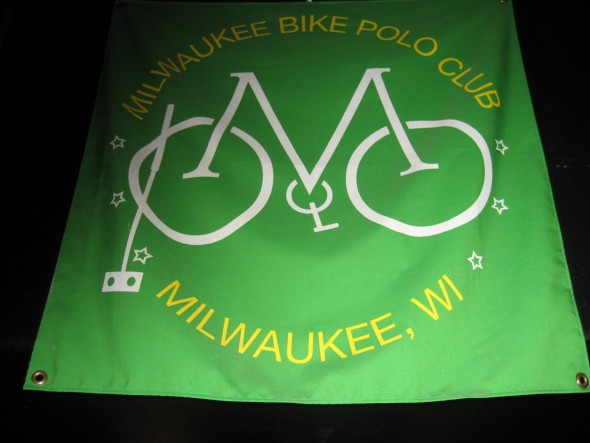
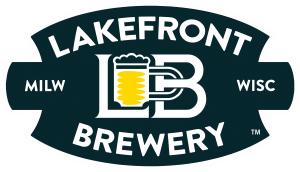
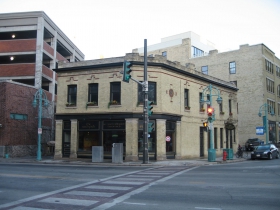
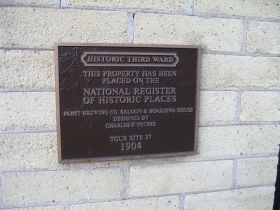
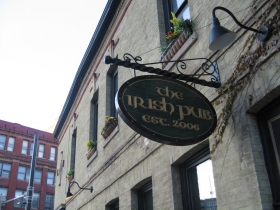
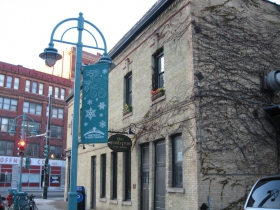
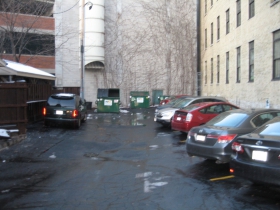
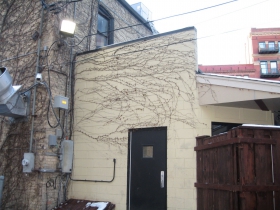















From the M & M Club – which everyone visited after all the other dance bars – to the Irish Pub, lively and welcoming in its own unique way. By the time you’ve covered all the bars in Milwaukee, Michael Horne, there’ll be so many more for you to review! Thanks for the in-depth coverage!